chops
Active member
- Thread Author
- #1
I was asked by a member in another forum as to why I don't have a reel-to-reel deck with my stack of cassette decks.
I started typing this up in the "What Are You Listening To Right Now?" thread in that forum, but soon realized it was way too large of a post and too way off topic, so made it its own topic thread as I'm sure a lot of the members there (and you guys/gals) might enjoy reading about it and possibly have questions.
Anyway, this is exactly what I had written in that thread...
I have about a dozen Maxell 7" RTR tapes from my father from when we had a 19 rank pipe organ in our house (that we built over a very long period of time). it was one of, if not the very first pipe organ to be fully controlled by a computer (late 1980's) with control boards from Peterson Electro-Musical that we had to hand wire into the console and all of its controls, keys and pedals, custom control circuits and servos designed and built by my father, and the computer with a 386DX processor running DOS 6.0 and Cakewalk Pro 1.0, where every single note had to be manually entered in along with its duration, timing, expression, stop choice, etc, etc. All of this was driven from the computer through a early, primitive version of midi (was not the midi standard of today) to a control/driver device that had to be custom built with bits from Peterson and bits of my father's own design.
We then upgraded to a Roland Sound Canvas SC-55 to not only listen to what we were entering into the software via headphones or through the stereo, but to also use it as the driver via midi to the control boards in the console, eliminating that clunky, cobbled together controller/driver device discussed above. It was a very complex, if not cumbersome setup by today's standards, but it was TOTL pioneering/leading technology back in 1987 - 1991 when the SC-55 came out.
I was 7 years old when I got heavily involved in helping my father EVERY DAY working on this organ. I was 21 when it was fully completed. All built into the 2-car garage which was walled off from the shop area, full sound insulated, temperature insulated and climate controlled. A large closet size opening was made in the wall in the foyer, covered on the outside with two folding closet doors, and a pneumatic swell shades on the inside to control expression, again, fully controlled via the computer and directly by the console of course.
Speaking of expression, while playing the organ, or the computer playing it, my father built a device that was directly connected to the swell shades (little silver box in top left of last photo above the chimes with RCA cables coming out of the top of it). This intercepted the signal between a dbx 760x mic preamp for the two Shure 48v phantom powered mics in the organ chamber (garage) to a pair of Alesis MicroVerb (I and II) reverb units in the living room, one for the front of the room, the other for the back end of the room. Finally, a Yamaha REV100 reverb piped into the main stereo for recording purposes. He had at his disposal a Tascam 112 Mk II, a Tascam 122 Mk II a Pioneer RT-707, all purchased new, and my oldest brother's Nakamichi DR-1. Lastly, the two of them went in half and half for a brand new Panasonic SV-3700 professional DAT recorder (which I have).










One thing is certain, I can definitely listen to cassettes any time I want to as I have this lovely vintage stack behind my listening seat in the back corner of the room.
The silver JVC KD-A8 is the deck my father bought new back in 1978. Probably the best 2-head deck ever built, and the thing weighs 27 lbs! He sold his original one after it issues that could not be fixed. This one he purchased a few years ago in mint condition, though it needs to be served. Everything about it works perfectly, but the belt(s) need to be replaced and it could probably use an alignment. It plays for about 6 minutes then stops (luckily, before it damages tapes).
The Nakamichi DR-1 on top is the deck my oldest brother bought new in 1992, after selling his DRAGON which was struck by lightning and destroyed. It was recently fully serviced and works perfectly.
The Nakamichi 582 below it is a deck my father always wanted, but never got back in the day. Instead, he purchased brand new a couple of 680ZX's which were ultimately better decks. Unfortunately, he sold both of them off later on. The 582 has also been fully serviced and works perfectly. He purchased a few years ago as well, around the same time as the JVC.
The Yamaha K-1020 on top of the JVC is a deck I purchased a few years ago as it was a deck I always wanted but could never afford new because I was 11 years old when it came out. LOL It has Dolby B & C, HX Pro, and dbx Noise Reduction. Either my father or one of my brothers had the broacher for it and I just really liked the looks of it. You know, kid priorities, though with that being said, I was no dummy when it came to stereo equipment as a kid.
The two dbx 400x "Program Route Selectors" I purchased recently specifically for this stack. Reason one because my father had the dbx 200x in his system and my oldest brother had the 400x in his system back in the 80's. I bought two because they only have 3 tape inputs each and I have four decks, and plan on getting two RTR decks eventually which will take up all six inputs.
Below that is a dbx 224x Nosie Reduction System which I also purchased. Since Dolby can vary from deck to deck, brand to brand, and actually is more aggressive, if I make any recordings of my own, I'll use the dbx 224x between all decks. Not to mention, the dbx noise reduction just sounds much better than Dolby.
On the very top, a Rane Balance Buddy BB44x which has been upgraded to BB88x status, meaning two 44x units in one chassis. This is to connect the full stack to my system in the front of the room via XLR to play and record,
To finish off the stack, I want to eventually purchase a mint Pioneer RT-707 like my father had, as well as eventually get the Revox A77 that he wants to give me. But since the whole stupid Covid thing, we haven't been able to see him since his 80th birthday last March.
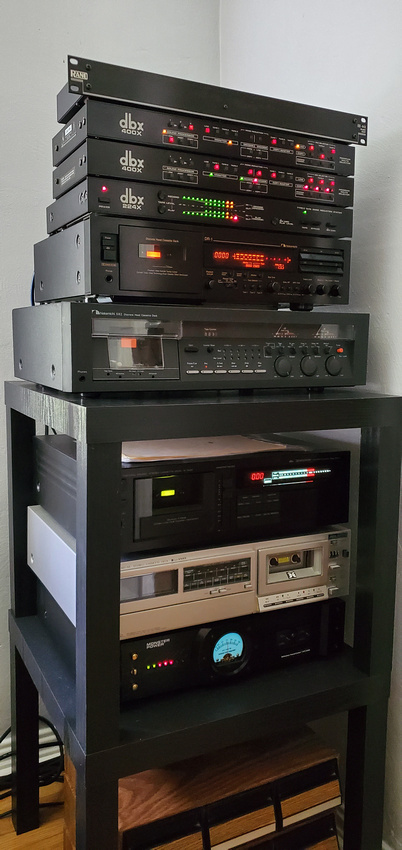
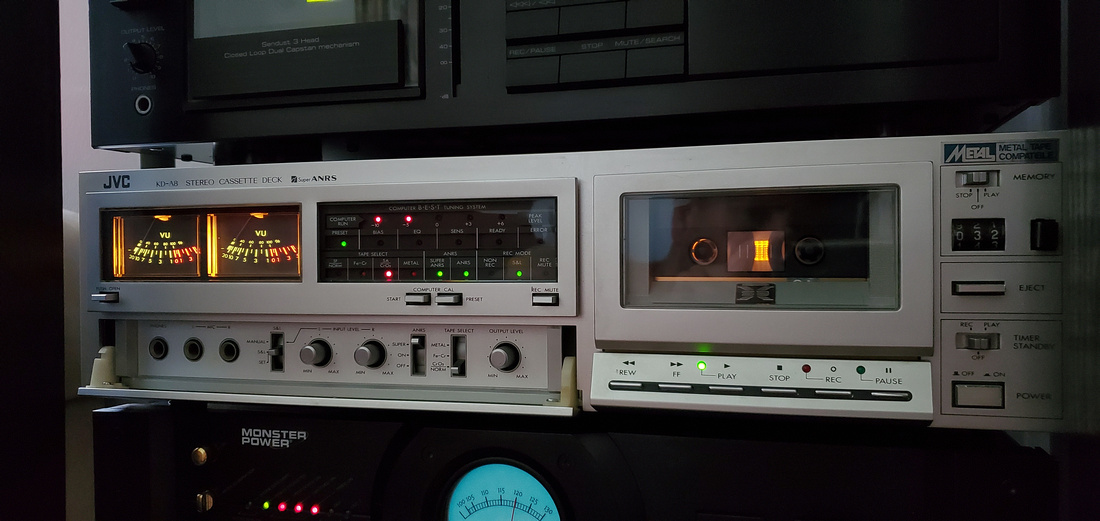
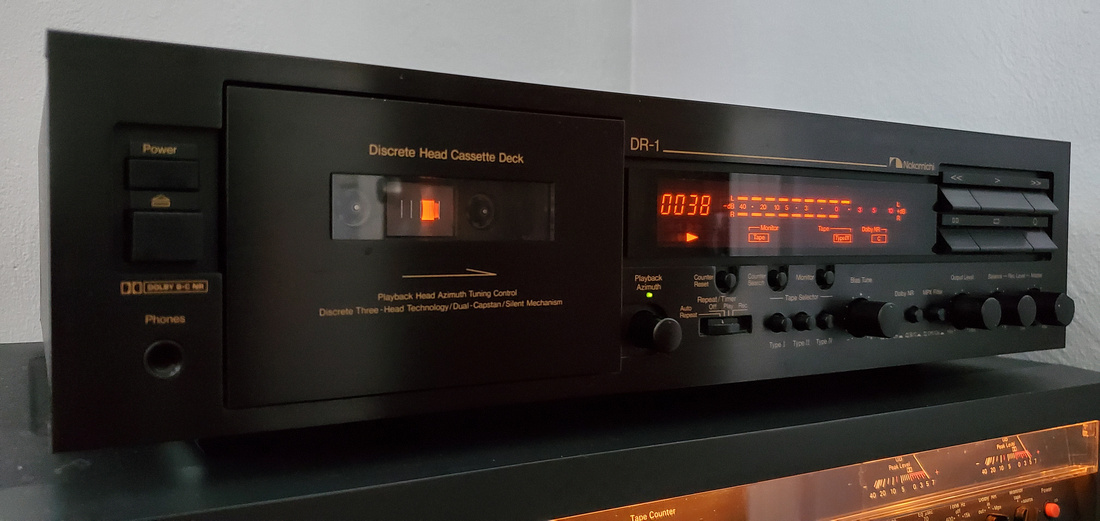
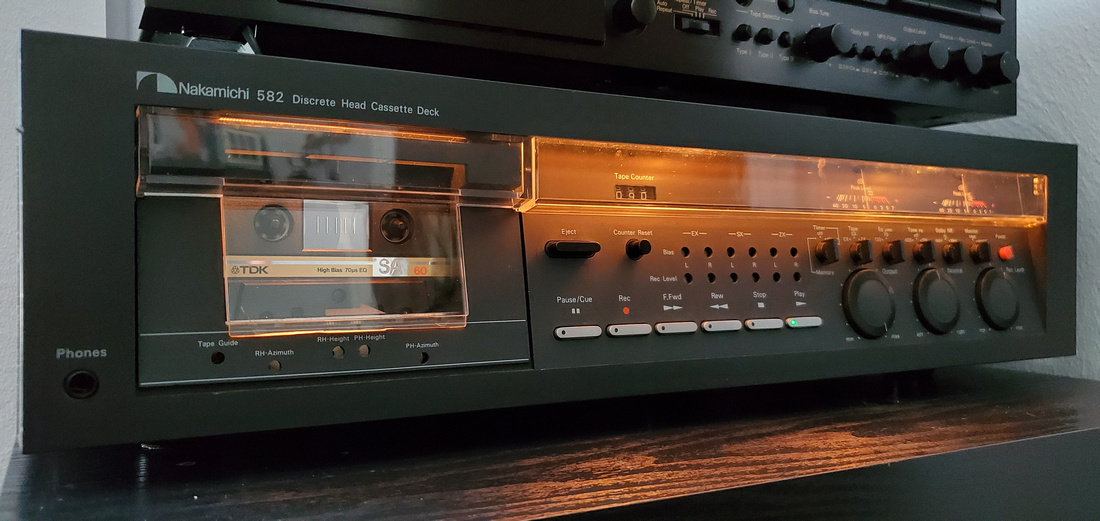

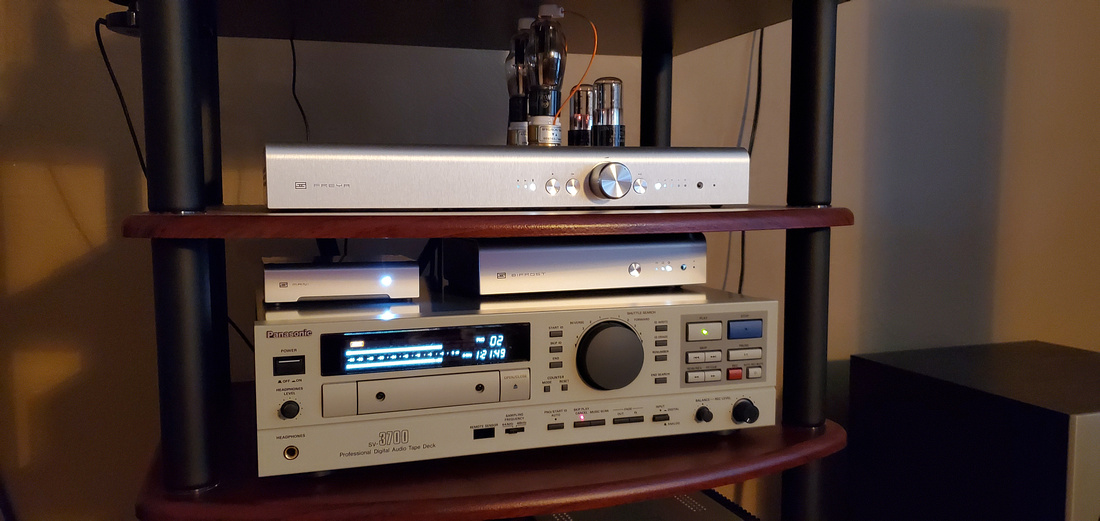
I started typing this up in the "What Are You Listening To Right Now?" thread in that forum, but soon realized it was way too large of a post and too way off topic, so made it its own topic thread as I'm sure a lot of the members there (and you guys/gals) might enjoy reading about it and possibly have questions.
Anyway, this is exactly what I had written in that thread...
I have about a dozen Maxell 7" RTR tapes from my father from when we had a 19 rank pipe organ in our house (that we built over a very long period of time). it was one of, if not the very first pipe organ to be fully controlled by a computer (late 1980's) with control boards from Peterson Electro-Musical that we had to hand wire into the console and all of its controls, keys and pedals, custom control circuits and servos designed and built by my father, and the computer with a 386DX processor running DOS 6.0 and Cakewalk Pro 1.0, where every single note had to be manually entered in along with its duration, timing, expression, stop choice, etc, etc. All of this was driven from the computer through a early, primitive version of midi (was not the midi standard of today) to a control/driver device that had to be custom built with bits from Peterson and bits of my father's own design.
We then upgraded to a Roland Sound Canvas SC-55 to not only listen to what we were entering into the software via headphones or through the stereo, but to also use it as the driver via midi to the control boards in the console, eliminating that clunky, cobbled together controller/driver device discussed above. It was a very complex, if not cumbersome setup by today's standards, but it was TOTL pioneering/leading technology back in 1987 - 1991 when the SC-55 came out.
I was 7 years old when I got heavily involved in helping my father EVERY DAY working on this organ. I was 21 when it was fully completed. All built into the 2-car garage which was walled off from the shop area, full sound insulated, temperature insulated and climate controlled. A large closet size opening was made in the wall in the foyer, covered on the outside with two folding closet doors, and a pneumatic swell shades on the inside to control expression, again, fully controlled via the computer and directly by the console of course.
Speaking of expression, while playing the organ, or the computer playing it, my father built a device that was directly connected to the swell shades (little silver box in top left of last photo above the chimes with RCA cables coming out of the top of it). This intercepted the signal between a dbx 760x mic preamp for the two Shure 48v phantom powered mics in the organ chamber (garage) to a pair of Alesis MicroVerb (I and II) reverb units in the living room, one for the front of the room, the other for the back end of the room. Finally, a Yamaha REV100 reverb piped into the main stereo for recording purposes. He had at his disposal a Tascam 112 Mk II, a Tascam 122 Mk II a Pioneer RT-707, all purchased new, and my oldest brother's Nakamichi DR-1. Lastly, the two of them went in half and half for a brand new Panasonic SV-3700 professional DAT recorder (which I have).










One thing is certain, I can definitely listen to cassettes any time I want to as I have this lovely vintage stack behind my listening seat in the back corner of the room.
The silver JVC KD-A8 is the deck my father bought new back in 1978. Probably the best 2-head deck ever built, and the thing weighs 27 lbs! He sold his original one after it issues that could not be fixed. This one he purchased a few years ago in mint condition, though it needs to be served. Everything about it works perfectly, but the belt(s) need to be replaced and it could probably use an alignment. It plays for about 6 minutes then stops (luckily, before it damages tapes).
The Nakamichi DR-1 on top is the deck my oldest brother bought new in 1992, after selling his DRAGON which was struck by lightning and destroyed. It was recently fully serviced and works perfectly.
The Nakamichi 582 below it is a deck my father always wanted, but never got back in the day. Instead, he purchased brand new a couple of 680ZX's which were ultimately better decks. Unfortunately, he sold both of them off later on. The 582 has also been fully serviced and works perfectly. He purchased a few years ago as well, around the same time as the JVC.
The Yamaha K-1020 on top of the JVC is a deck I purchased a few years ago as it was a deck I always wanted but could never afford new because I was 11 years old when it came out. LOL It has Dolby B & C, HX Pro, and dbx Noise Reduction. Either my father or one of my brothers had the broacher for it and I just really liked the looks of it. You know, kid priorities, though with that being said, I was no dummy when it came to stereo equipment as a kid.
The two dbx 400x "Program Route Selectors" I purchased recently specifically for this stack. Reason one because my father had the dbx 200x in his system and my oldest brother had the 400x in his system back in the 80's. I bought two because they only have 3 tape inputs each and I have four decks, and plan on getting two RTR decks eventually which will take up all six inputs.
Below that is a dbx 224x Nosie Reduction System which I also purchased. Since Dolby can vary from deck to deck, brand to brand, and actually is more aggressive, if I make any recordings of my own, I'll use the dbx 224x between all decks. Not to mention, the dbx noise reduction just sounds much better than Dolby.
On the very top, a Rane Balance Buddy BB44x which has been upgraded to BB88x status, meaning two 44x units in one chassis. This is to connect the full stack to my system in the front of the room via XLR to play and record,
To finish off the stack, I want to eventually purchase a mint Pioneer RT-707 like my father had, as well as eventually get the Revox A77 that he wants to give me. But since the whole stupid Covid thing, we haven't been able to see him since his 80th birthday last March.









